Engineering/code question
I worked on a new hillside home in California many years ago which had it’s two car garage on the top (third) floor.
The house was standard 2X4 construction, built on four seriously large piers, all connected underground on the steep hillside. Lots of concrete and rebar.
The short driveway was concrete poured on a framework of doug fir 2X12 on 12″ centers. There were three smaller piers next to the road, as anchors and supports for that end of the driveway.
My question is: would today’s engineering and code allow anything like this?
Specifically, if I built an anchoring wall of concrete near the road, would that be enough to allow for the other end of the driveway structure to be carried by a wood framed house?
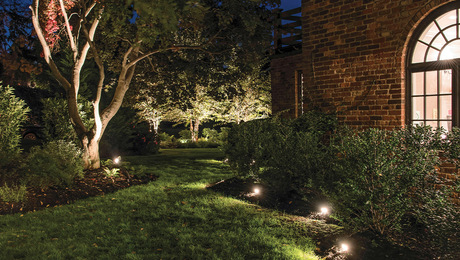
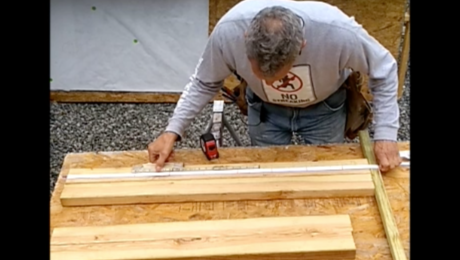
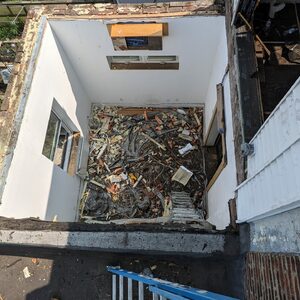
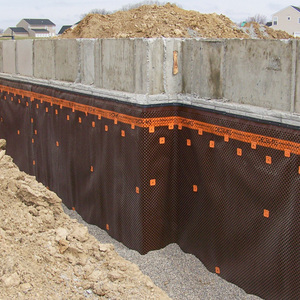
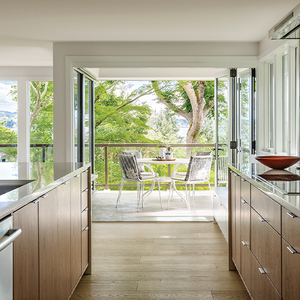
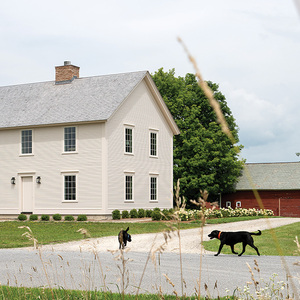













Replies
Not sure if I understand the situation. Was this driveway sitting on the ground, or was it an elevated 'skyway'?
Dinosaur
How now, Mighty Sauron, that thou art not brought
low by this? For thine evil pales before that which
foolish men call Justice....
It was elevated. The road frontage ran above and across the steep hillside property so only the piers were planted in terra firma. Everything else was elevated and stick framed with doug fir.
There was no steel anywhere in the structure, only some rebar in the concrete pad, which was poured as a driveway and garage floor. This architect designed house was in Oakland California. There was a permit posted.
Any idea if it's still in good shape (and how long ago was this)? Just curious....
As to your question, my guess would be yes, you could probably still build a concrete-decked wood-framed bridge, but you would need an engineer to sign off on the design to get a permit. I don't know of tables for bridge building in the code books I use.
Some weenie would probably try to spec PT, too. Betcha....
There are still a couple of functioning wood-framed road bridges in this area. One is a covered bridge decked with wood 6x8s; the other was topped with asphalt many years ago. Both date from the early 1900s.
Both are rated 5T GVW and have air-draft limits of 2 metres (my pickup just squeezes under without the ladders on the rack); they're in the neighbouring village of Arundel.
By contrast, the pencil-pushers in our village closed a 1930s-vintage steel bridge crossing the Devil's River about 5 years ago. Nothing specifically wrong with it that they could point to, but a big concrete overpass crossing Autoroute 15 between here and Montreal (dating from the 1970s) had failed that year, and the CYA factor kicked in.
Dinosaur
How now, Mighty Sauron, that thou art not broughtlow by this? For thine evil pales before that whichfoolish men call Justice....
Any idea if it's still in good shape (and how long ago was this)? Just curious....
It was in '69. I strongly suspect that it burned in the last big fire, about ten years ago. That was the area where they all went up.
I'm not really interested in a wood framed bridge. I just want to know if a well anchored concrete deck can be supported on one end by a wood framed structure, assuming that the opposite end is anchored to a foundation.
What I'm envisioning is a full foundation for the short driveway, then a suspended concrete deck for the garage. The hillside site under consideration is not nearly as steep as the one I described.
I think it would depend on the type of ground in which you wanted to anchor the end of the bridge. And the flood rating of that hillside. Places with, say, a 25-year flood rating would not be a good candidate for anything not anchored to the underlying bedrock, and for that I think you need to drill anchoring steel into the rock and pour over it.
For 100-year flood zones composed of well-vegetated ground, I don't see why you couldn't sink enough wood piers big enough and deep enough to stay in place as long or longer than the foundation of the house holding up the other end of the driveway, but it might be a shoot-yerself-in-the-wallet solution.
I've had similar problems anchoring docks to the shore up here. We often find the bedrock at the shore less than a foot under the surface, so we don't have to go deep to get to it. But that also means we can't bury a pier deep enough for it to stay put when the ice floes start trying to rip that dock away from the shore during spring breakup. Best solution I've come up with is to drill a line of 1" Hilti's into the rock and use those to bolt down a humongous hunk of hemlock to which I then anchor the ends of the stringpieces.
Most times it works; other times it all turns into splinters. Ice is almost unstoppable. Which is why docks are the only thing I build that I do not guarantee against weather damage....
Dinosaur
How now, Mighty Sauron, that thou art not broughtlow by this? For thine evil pales before that whichfoolish men call Justice....
Edited 10/3/2009 4:38 pm ET by Dinosaur
Thanks for sharing your experience. The "bedrock" is shale, beginning about six feet below grade. Having done some hand digging in it, many years ago, I anticipate that it would be a viable base at about eight feet. My expectation has been that the anchor's footing would be rather substantial, in both lateral dimension.
Well, I think you know that the answer would be no. No in Kansas, no in NY, and a double no in the west coast siesmic zones
Were the uphill piers directly connected to the slab?
I think you were asking a similar question, i.e. if the uphill side is adequately anchored to footings/grade beams/augers, etc. can the vertical load be carried by wood framing with no other shearwalling?
I don't see why not. If the upper corners are anchored and adequately tied into the slab, the whole thing acts like a horizontal shear wall, and the rest of the structure simply has to carry vertical load.
k
Edited 10/3/2009 4:05 pm by KFC
Were the uphill piers directly connected to the slab?
I don't recall how the concrete deck was anchored to the piers. I wasn't there for the pour so nothing sticks in my memory. I just remember trying to nail bridging in the narrow spaces between the 2X12's.
If the uphill corners are anchored to piers that are anchored to earth or bedrock, and the slab itself is adequately reinforced, then the downhill, freestanding elevated corners can't displace laterally. They only need vertical support.
Unless I'm missing something.
k
Edited 10/3/2009 4:32 pm by KFC
I'd think that most engineers would probably spend more time worrying about allowing for relative motion between the components than calculating whether the structure can bear the load. The static load issue is fairly straight-forward and easy to calculate, but, between thermal expansion, ground heaving due to moisture variations (even if there's no freezing to worry about), vibration, and settling (not to mention earthquakes), the motion issue is very complex.
As I stood before the gates I realized that I never want to be as certain about anything as were the people who built this place. --Rabbi Sheila Peltz, on her visit to Auschwitz
It will be very difficult to get an engineer to design a conventionally framed structure strong enough to pour concrete on, then drive a car on top of.
Might be difficult to GET the engineer to design it, not difficult for the engineer to design. After all, many concrete forms are made mostly of wood.
As I stood before the gates I realized that I never want to be as certain about anything as were the people who built this place. --Rabbi Sheila Peltz, on her visit to Auschwitz
the motion issue is very complex.
As several of you have shown interest in this question I'll add some more of my thoughts on what I'd like to build. BTW, this property is in a very calm seismic area of NY State.
So what would you think an engineer would say about placing a full foundation under the driveway, then suspending an attached garage between the driveway and the house?
That's actually what I've had in mind, not putting the garage on top of the house but using one framed wall to support one end of it.
The minimum setback for living space is forty feet from the road. With the existing slope that puts the road at about eighteen-twenty feet above the downhill face of the house, two floors and a foundation.
Assuming I can get a variance for the setback of the attached garage, to twenty-twenty-five feet, I'd have the garage very well anchored by a full foundation under the driveway.
The reasons for suspending the garage are multiple, starting with the savings in concrete but including a lot of useful space on two levels under the garage.
Just to clarify, the useful space under the garage would be open - sort of a breezeway or dogtrot - with the house forming one side and a foundation wall or retaining wall at the end of the driveway forming the other?
That's the essence of it but there'd be full two stories between the ground and the garage floor. So the possibility exists for installing one floor below the garage as living space, then having an open or closed space below, for garden equipment, and etc.
I've been considering getting some precast concrete sections, twenty feet long, to bridge the span. One of the benefits of using them is that they have their own engineering seal and specs for installing them.
Edited 10/3/2009 9:16 pm by Hudson Valley Carpenter
Having living space below does make it a bit more complicated as you will end up with a sandwich of structure, membrane and topping slab to keep things dry. Nothing insurmountable though. All sorts of buildings have parking garages on their roofs.
The living space idea isn't important. It could just as easily be unconditioned storage.
Originally I had considered using the space for a cistern but the investment is more than is practical at this point. There are better methods of conserving water, re-using gray water for toilets, as an example. There are simple systems on the market for that purpose.
Re-using gray water would save almost as much water as I could collect off the roof in one year. I can still employ an relatively inexpensive round above-ground pool as a cistern, to capture water for summer gardens.
That's actually what I've had in mind, not putting the garage on top of the house but using one framed wall to support one end of it.
I've been considering getting some precast concrete sections, twenty feet long, to bridge the span.
Assuming the precasts weigh 100# sqft and vehicle 3,000#.
10' slab = 1000#.
1 corner of vehicle = 750#
Live load = 40# sqft
Framed wall must support 750# random point load + 400# live load + 1000# dead load / linear foot. About a ton per linear foot of bearing wall.SamTA Pragmatic Classical Liberal, aka Libertarian.
I'm always right! Except when I'm not.
Thanks Sam. Of course there's additional dead loads from the garage structure and potential snow.
I'm pretty sure that it's all possible, even if it requires 2X8 bearing walls, sheathed on both sides, as box beams.
any reason why you're dead set on using wood other than having the same disease as me (carpentertitis)?
My plan is for a super-insulated three story duplex, using double 2X4 exterior walls as a minimum.
Besides having my personal preference for wood framing, it's the most economical way to super-insulate a house.
I'm sure you CAN use wood, if you use enough of it. Not sure why you WANT to, though, when steel would likely be more straight-forward.
As I stood before the gates I realized that I never want to be as certain about anything as were the people who built this place. --Rabbi Sheila Peltz, on her visit to Auschwitz
He is only talking about supporting the garage which will likely be concrete slabs on the wood frame wall of his house. What would bringing steel into that wall solve?
It would allow for less mass in the wall, permitting it to be insulated more readily. It would provide more predictable compression (and essentially zero "creep"), so that the floors in the house would be flatter, and cracks in the walls would be avoided. It would make the BIs happier.I don't doubt that wood CAN be used in this situation, but I wonder how practical it is. Unless the HO is working for the Forest Products Society, I don't see any advantage in wood.
As I stood before the gates I realized that I never want to be as certain about anything as were the people who built this place. --Rabbi Sheila Peltz, on her visit to Auschwitz
when steel would likely be more straight-forward.
I don't get what you mean. What kind of steel structure would you use to replace a 20' high wood framed box beam?
how do you know a box beam is going to be sufficient? and at what spacing for the verticals?
Aren't we getting a bit ahead of ourselves here? He hasn't decided that the structure of the garage is yet. Once that's done it is a fairly minor point to decide how the house wall supporting it is constructed. The garage may turn out to be entirely wood frame too with a membrane and topping slab. Nothing precludes using a stud wall to support several stories of rooms - one of which happens to be a garage.
how do you know a box beam is going to be sufficient?
Did you read my first post in this thread? I've seen more weight successfully carried, using half the material that I'm proposing.
mebbe I came across a bit accusasorty in my post, not intended.
That much engineering on a house might move you out of the IRC and into the IBC. Better start talking with the AHJ sooner than later.
mebbe I came across a bit accusasorty in my post, not intended.
That's OK. I was responding simply and directly. Sometimes people come back to a thread but don't recall what was said earlier. When they ask a question which shows they've forgotten something, the easiest way to reply is by directing their attention to a previous statement.
Thanks to you all for kicking this idea around with me. The discussion has stimulated a couple of new ideas, moving me closer to completing the design.
Very doable and quite easy. The knack will be getting an engineer with some experience so you don't end up paying for him to educate himself.
There are lots of houses on the slopes of West Vancouver that have similar structures with the parking on the roof that are approached by wooden ramps. Most were built in the 80's.
Just down the road from my place there is a house with the garage on the second level. It is all conventionally framed with a concrete pad on truss joists. I don't think that one even had an engineer beyond the in-house lumber yard guy running the spans.
Believe me, the west coast of the US is much more stringent than the west coast of Canada. Furthermore, what was done in the '80's is becoming mute. In 1986, Brian Atwater of the USGS, along with others at the UW, WWU, UBC, Canadain Geologic Survey, recognized that earthquakes in the Frasier and Puget lowlands were probable that were factors of 10 to 100 stronger than previously thought.
You're quite right, even though we share similar risks, we get off very lightly when it comes to seismic design. Even though the OP referred to a California example, I assumed (perhaps incorrectly) that his question referred to the ongoing design work on his own project in the Hudson Valley where earthquakes aren't as big a concern.
I built a ton of those also. Who knows how they are now, a lot burned up in the last big fire (I forget the year).
Plenty of garages rebuilt on the same terrain, I assume with a lot more reinforcing. Perhaps a moment frame. The last one I did was in Mill Valley about 2005 and I don't remember anything over the top about it.
John
I built a ton of those also. Who knows how they are now, a lot burned up in the last big fire (I forget the year).
I'm pretty sure that one burned in the last fire, about ten years ago.
What's a moment frame?
Is that what the architect says when you try to get an answer from him on the phone? "Back with you in a moment".
A welded steel frame. Although as I think about it, the job I mentioned just had standard shear walls below. I know there are some Bay Area guys here, some must have done one recently.]]John
Thanks for the clarification.
Right away, I note that the IRC required 2x6 studs when the wall is supporting more than one floor and a roof.
Just guessing, but I would expect either a steel moment frame or an insane amount of wood (if you could even get an engineer to design with wood).
Jon Blakemore
RappahannockINC.com Fredericksburg, VA
Just guessing, but I would expect either a steel moment frame or an insane amount of wood.
I wonder if making the supporting walls into box beams, sheathed on both sides, would make it acceptable?
I've worked on more than a few homes on the west coast where the only limitation is the crazy engineering, cost, and the local review boards. Most building departments will make you jump through hoops, but the engineers stamp is usually the deciding factor.
I've seen a few "questionable" designs in the tahoe area. They weren't built too long ago either.
Lemme guess, somewhere along Skyline Blvd.?
Sounds familiar but it's been forty years. I didn't live in Oakland, just worked on that one framing job there for about a week.
I have been in many of those pole houses in the east bay hills and also on Twin Peaks. Felt them moving in the wind also, strange sensation.
I wonder if the new "soft story" code requirements an legislature will affect these houses?
View Image Mike
Small wheel turn by the fire and rod, big wheel turn by the grace of god.
My bank's local branch is in a relatively new office building near here in earthquake country, about ten miles from the epicenter of the last two major quakes in SoCal. The building rests on big rollers of some kind. Standing or sitting in the bank, when someone walks across the floor it feels like it must be an elephant. The first time I felt it I spun around to see what had entered the bank. Had to laugh when it was an average sized person.
No way to know for sure. It would depend on the seismic requirements, soil conditions, etc, etc. This stuff is usually case-by-case.